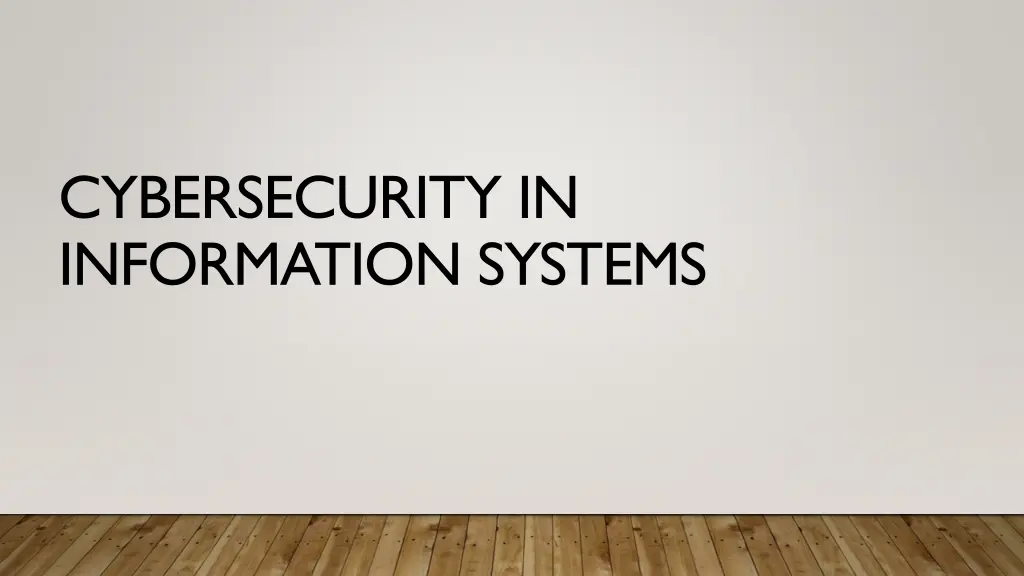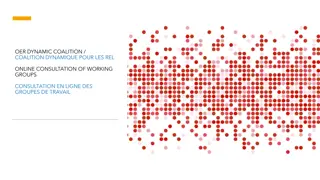
Understanding Cybersecurity and Best Practices
Learn about the importance of cybersecurity in safeguarding computer systems, networks, and data from threats such as malware, phishing, ransomware, and more. Discover best practices like using strong passwords, updating software, and implementing cybersecurity frameworks like NIST and ISO 27001 to protect sensitive information.
Download Presentation

Please find below an Image/Link to download the presentation.
The content on the website is provided AS IS for your information and personal use only. It may not be sold, licensed, or shared on other websites without obtaining consent from the author. If you encounter any issues during the download, it is possible that the publisher has removed the file from their server.
You are allowed to download the files provided on this website for personal or commercial use, subject to the condition that they are used lawfully. All files are the property of their respective owners.
The content on the website is provided AS IS for your information and personal use only. It may not be sold, licensed, or shared on other websites without obtaining consent from the author.
E N D
Presentation Transcript
CYBERSECURITY IN INFORMATION SYSTEMS
WHAT IS CYBERSECURITY? Cybersecurity refers to the practice of protecting computer systems, networks, and data from digital attacks, theft, and damage. It involves implementing measures to prevent unauthorized access, use, disclosure, disruption, modification, or destruction of information
WHY IS CYBERSECURITY IMPORTANT? In today's digital age, information systems play a crucial role in our personal and professional lives. Cybersecurity is important because it helps safeguard sensitive information, prevents financial loss, protects privacy, ensures business continuity, and maintains trust in the digital ecosystem
COMMON CYBERSECURITY THREATS Malware: Malicious software designed to harm or gain unauthorized access to a computer system. Phishing: Sending deceptive emails or messages to trick individuals into revealing sensitive information. Ransomware: Holding computer systems or data hostage until a ransom is paid. Social Engineering: Manipulating individuals to gain unauthorized access or sensitive information. Denial of Service (DoS) Attacks: Overwhelming a system with traffic to disrupt its normal functioning. Data Breaches: Unauthorized access or disclosure of sensitive information. Insider Threats: Malicious actions or negligence by individuals within an organization
BEST PRACTICES FOR CYBERSECURITY Use strong, unique passwords and enable multi-factor authentication. Keep software and operating systems up to date. Regularly backup important data and store it securely. Be cautious of suspicious emails, attachments, and links. Install reputable antivirus and anti-malware software. Educate yourself and your team on cybersecurity best practices. Implement network security measures, such as firewalls and intrusion detection systems. Regularly monitor and audit system logs for any suspicious activity
CYBERSECURITY FRAMEWORKS NIST Cybersecurity Framework: A widely recognized framework that provides guidance for organizations to manage and reduce cybersecurity risks. ISO 27001: An international standard for information security management systems. CIS Controls: A set of prioritized cybersecurity actions developed by the Center for Internet Security. PCI DSS: A security standard for organizations that handle credit card information. HIPAA: A regulation that sets standards for protecting sensitive health information. GDPR: A regulation that aims to protect the privacy and data of European Union citizens
CYBERSECURITY INCIDENT RESPONSE Preparation: Developing an incident response plan and establishing a dedicated team. Detection and Analysis: Identifying and assessing potential security incidents. Containment: Isolating affected systems and minimizing the impact. Eradication: Removing the cause of the incident and restoring affected systems. Recovery: Restoring normal operations and implementing preventive measures. Lessons Learned: Evaluating the incident response process and making improvements
CYBERSECURITY CHALLENGES Evolving Threat Landscape: Cyber threats are constantly evolving, requiring organizations to stay updated and adaptive. Insider Threats: Malicious actions or negligence by employees or trusted individuals. Resource Constraints: Limited budgets, lack of skilled personnel, and inadequate security measures. Third-Party Risks: Dependence on third-party vendors and service providers can introduce vulnerabilities. Compliance and Regulations: Meeting legal and industry-specific cybersecurity requirements. Emerging Technologies: The rapid adoption of new technologies introduces new cybersecurity challenges






















